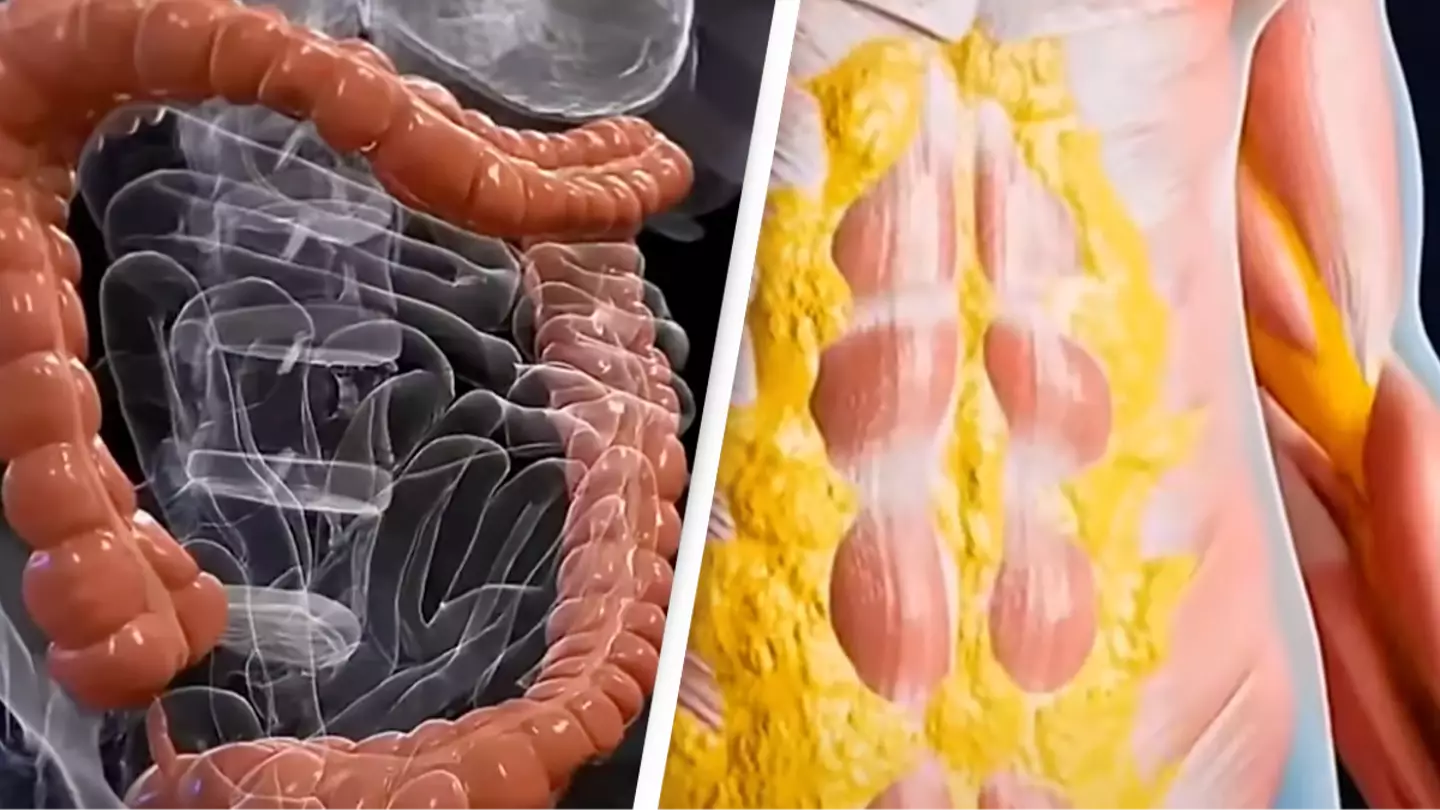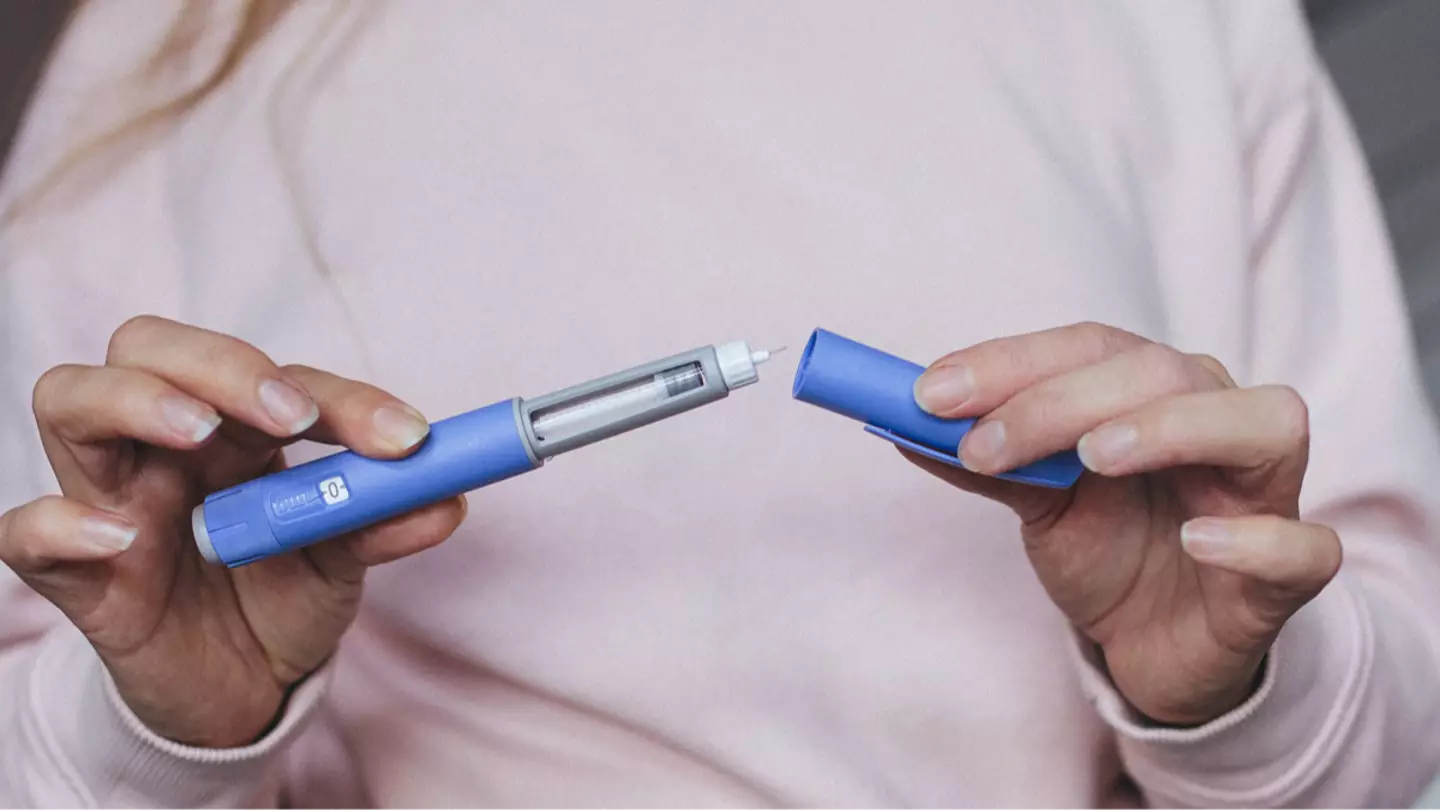Fasting refers to refraining from eating for a set period of time, but recently, more and more people have been opting to ‘dry fast’ which means no food or liquids of any kind, not even water.
There are some reported health benefits, including reduced inflammation, increased skin health and weight loss, however research into these is somewhat limited.
While people decide to fast for various reasons, including religious observances, to promote weight loss, and even to improve cognitive function, some experts have spoken out on ‘dry fasting’ and the associated dangers if it’s practiced for too long.


Experts have issued a warning over dry fasting (Getty Stock Photo)
Registered dietitian Julia Zumpano, spoke to Cleveland Clinic about dry fasting, explaining that if you’re opting to dry fast as a means of improving your health, it may not be as effective as you think.
“There’s just not a lot of data on it,” she said.
“There are some studies with people who are following Ramadan fasts, but when it comes to the general public, there’s not a lot of good data.
“Dry fasting can lead to dehydration, kidney issues and cause other symptoms that aren’t worth the risk.
“With other forms of fasting, you can get the benefits of fasting without dehydrating yourselves.”
But that’s not all.


Dry fasting means no water, either (Getty Stock Photo)
Zumpano explained that there are some concerning risks, adding: “Dry fasting can also cause, urinary, kidney and lungs issues, as well as nutritional deficiencies and eating disorders.”
There are other symptoms, too, including fatigue; irritability; headaches; lack of focus; decreased urination and constipation.
A simulation has revealed what actually happens to your body during a 36-hour dry fast, and it’s pretty alarming.
What happens to your body during a 36-hour fast?
Four hours
In a 55-second video, posted to YouTube by Wellness Wise on May 6, it’s revealed that after four hours of fasting, your body stops digesting food.
According to popular practitioner Doctor Kiltz, this is what is known as the ‘catabolic phase’.
On his website, he says this period is ‘characterized by the breakdown of larger molecules of stored energy into smaller energy molecules which are mobilized to fuel your cells’.
Eight hours
This is the time when sugar starts to drop in your blood and your body begins to use stored glycogen for energy instead of relying on new fuel coming in.
12 hours
After 12 hours, your body is depleted of glucose, causing your liver to start breaking down fat into fatty acids called ketones.
This process of turning ketones into food is known as ‘metabolic switching’ and, according to the BBC, is the reason why fasting can lead to weight loss.
16 hours
A cellular process known as autophagy takes place after 16 hours of going without food.
As per the Cleveland Clinic, this allows a cell to disassemble its junk parts and repurpose the salvageable bits and pieces into new, usable cell parts.
24 hours
A full day without food is a pretty long time for most, but this 24-hour mark is where major cellular repair takes place in the human body.
According to the YouTube video, which has been viewed more than eight million times, your body is fully in fat-burning mode, reducing inflammation and improving insulin sensitivity.
30 hours
The growth hormone spikes 30 hours after fasting, which reportedly helps to preserve muscle and promote fat loss.
36 hours
If you fast for 36 hours then you’ve reached the stage of maximum autophagy where your body allegedly regenerates tissues and boosts your metabolism.
Featured Image Credit: YouTube/wellneswise4
Topics: Health, Food and Drink


A simulation has shown how your body gets to work when you go 36 hours without eating, and the results are surprising.
When it comes to eating healthy and having a balanced lifestyle, people have a whole lot of opinions. And one of those common opinions is of the benefits of intermittent fasting, which is an eating plan that switches between fasting and eating on a regular schedule, per Johns Hopkins Medicine.
But what actually happens to your body during that period?
Well, a YouTube video has shown how the body tends to respond to no longer getting any sustenance.
The 55 second video, posted on the platform by the Wellness Wise channel on May 6, has many users praising the effectiveness of fasting and the benefits they have seen from doing it.


Fasting can have a surprising impact on your body in just a few hours (Getty Stock Image)
According to the video, after four hours your body stops digesting food, insulin drops and it starts burning stored sugar for energy.
After eight hours a person’s blood sugar levels begin to drop and the body begins using stored glycogen for energy.
It is at about 12 hours that fat burning begins to take place and the body starts to shift into ketosis. This pretty much just means the body is burning fat for energy instead of glucose.
This can result in weight loss, so now you understand the basic appeal of the method for losing weight.
At around 16 hours the body starts breaking down damaged cells and toxins for recycling, this phase is known as autophagy.
At 24 hours the body is fully in ‘fat burning mode’, according to the video and at this point the body can reduce inflamation and increase insulin sensitivity.
At 30 hours growth hormones inside the body begin to spike and this is believed to help preserve muscle and promote fat loss.
And finally at 36 hours the body is at maximum autophagy where your body regenerates tissues and boosts your metabolism.
Amazingly, this ‘body reset’ can be extended to 72 hours, however it will prove more difficult.
Johns Hopkins medicine has outlined some of the benefits of intermittent fasting while there remains some debate as to whether fasting is good for the body.
They noted that some of the benefits research has concluded can be gained included:
- Improved thinking and memory
- improved heart health,
- improved physical performance,
- helped prevent obesity
- improved tissue health


There remains a debate between scientists on the benefits of intermittent fasting (Getty Stock Image)
Despite these potential benefits, there are also common negative side effects that can occur when it comes to fasting.
While severity may vary, the side effects can include:
- Excessive hunger pangs
- Fatigue and low energy
- Headaches (ranging from mild to severe)
- Dizziness
- Digestive issues (e.g., constipation and bloating)
- Irritability and other mood changes
- Bad breath
- Sleep disturbances
- Dehydration
- Polyuria (excessive urination)
- Potential impacts on reproductive health
- Nutrient deficiencies and malnutrition
So before you give long intermittent fasting a go, probably best to speak to your healthcare professional for advice.
Featured Image Credit: YouTube/Wellness Wise
Topics: Health, News, Food and Drink


The man who ate a diet of liver for more than 10 years has shockingly denounced his carnivore diet, admitting for the first time that he was ‘wrong’ in a tell-all Netflix documentary.
If you don’t know who Brian Johnson is, then you’ll probably recognize him as the ‘Liver King’ – the half-naked muscle man from Texas who gorges on animal organs to his millions of social media followers while preaching a primitive lifestyle.
In a new Netflix documentary, The Untold: The Liver King, we are treated to a horror show of Brian’s extreme way of living that is aggressively supersized: tanks, muscles, rifles, trucks, bench presses and explosions – all while touting a carnivore diet and an unapologetic potty mouth.
The diet, which shuns fruit, vegetables, grains and virtually everything that isn’t meat, poultry or eggs, isn’t advised by most doctors, who’ve stressed that it poses a host of cardiovascular and gut problems.
Yet that didn’t stop The Liver King, his ‘Liver Queen’ and their two children from chowing down on bull testicles, tongue, thymus, bone marrow, kidneys, liver and fertilized eggs raw for more than 15 years every day.
In one stomach-churning point in the show, Brian and his family gun down a bull and feast from its insides, as per the doctrine of his ‘ancestral way’ that he claimed cured his sons from their health problems and allergies.
Between the (literal) blood, gore and guts, the episode follows Brian’s rise and demise, exposing the impact of the ‘steroids scandal’ that threatened his businesses, career and reputation in between some rather wild claims – like he doesn’t get sunburnt.
However, it’s his stark admission that he may have actually been ‘wrong’ about the whole carnivore diet thing which comes as the biggest shock in the documentary… even more shocking than a freezer-full of cow balls.


Brian Johnson in all his glory (Instagram/liverking)
The Liver King’s online empire
Explaining how he got here, Brian, born in 1978 in San Antonio, says he was a ‘runt’ as a child and lost out on a father figure when his dad passed away at a young age.
He fell in love with the gym, ‘the most beautiful f***ing playground’, and Arnold Schwarzenegger, who inspired him to become ‘the savage f***ing king that I always wanted to be’.
Devouring bovine innards came from Mark Sisson’s book which he read while researching ways to help his children overcome anaphylactic shock, as per the story he’s told countless times on podcasts.
“And that’s when I decided, holy sh**, organs are really f***ing awesome. I’m going to make a company with all nose-to-tail stuff,” he said, leading him to launch Ancestral Supplements in 2016 and wax lyrical about his ‘Nine Ancestral Tenets’ to his rapidly-growing disciples.
Speaking about his snowballing fame, he said: “I felt new levels of invisibility. That kind of feeling is dangerous.
“I used to hate my f***ing life, and now I’ve made my f***ing fortune.”


Here he’s eating raw, fertilised eggs, shell and all (Instagram/liverking)
“I always told the truth”
Questions soon began to arise over whether Johnson had taken steroids to maintain his buff figure, which he point-blank denied several times, instead suggesting the nine tenets were behind his sculpted physique.
The tenets are: ‘sleep’ (preferably on a wooden pallet), ‘eat’ (…you know what), ‘move’, ‘shield’ (from Wi-Fi and cellphones), ‘connect’ (with the Earth, barefoot), ‘cold’ (by plunging into ice water), ‘sun’, ‘fight’ and ‘bond’ (with family).
He also denied the claims in an interview, saying: “The question has always been, ‘Do you take steroids? Do you take [performance enhancing drugs]?’ The answer to that is no. I’ve always told the truth, I still tell the truth.”
But that all came crashing down in November 2022, when a YouTuber exposed leaked emails that showed he was taking fitness-enhancing drugs, worth around $10,000 a month.
In the documentary, Brian said: “There’s no denying that man. I knew he got me.”
Johnson’s apology after email leak
Following the leak, Johnson apologized, telling his followers that he was ’embarrassed and ashamed’ because he ‘lied and I misled a lot of people’.
“Yes, I’ve done steroids and yes, I am on steroids monitored and managed by trained hormone clinicians.” he said.
However, the video went down like a lead balloon and he was quickly conveyed as a fraud and a snake oil salesman.
When asked by producers if he ‘misled’ people, he responded frankly: “Absolutely. Yeah.”
He then reeled off in an unexpected revelation how he turned to crime at the age of 16, printing money, stealing from his employer and reverting his apartment into a ‘chemistry lab’ for drugs.
“My perception of risk is becoming distorted,” he said of his younger self. “I just never got caught.”


Fruit and vegetables were once off the table (Netflix)
“I was starving myself”
Then at the end of the show, we see Brian doing something uncharacteristically extraordinary: Foraging for berries and ‘thanking’ melon.
He explained: “I was so convinced all the carnivore stuff, that’s what you need to really kick ass in life. I’m convinced now that I was starving myself.
“I guess I want the world to know I was wrong. I got it wrong. I got all of it wrong. I think as each passing day goes by, I realize I don’t know s***. There’s a lot more that I don’t know than I do know. Like an extreme approach to anything probably ain’t f***ing working out.”
In line with his newfound ‘enlightening’, he’s added a tenth tenet: ‘Evolve.’
Brian concluded: “People say s*** like ‘born again’, I don’t f**king know what.. How to describe it.. Other than I feel like I was just kind of meandering through, like I was the f***ing zombie of life.
“I was so intense and so focused on growth and numbers and getting the message out… I have this new freedom.
“I don’t have to lie about anything.”
Untold: The Liver King is available to stream on Netflix.
Featured Image Credit: Tiktok/@liverking
Topics: Netflix, Health, Social Media, US News, Texas, Food and Drink


It’s not exactly new news to say that vaping comes with some pretty horrendous side effects, but now you can actually see what the chemicals do once inside the body and it’s pretty horrifying.
The horrors of long-term vaping are widely spoken about in this day and age, including tragic stories like a man who was given a one percent change of surviving after developing a vaping addiction, or a 17-year-old having a five-and-a-half hour surgery to remove part of her lung after vaping the equivalent of 400 cigarettes per week.
According to the NHS website, the full effects of vaping on the body are still being discovered.


The effects of long-term vaping are still being determined, but it’s thought to have a devastating impact on the lungs and body (Getty Stock Image)
The website reads: “Research on vaping related harm is rapidly developing. Current evidence suggests vapes are less harmful than smoking tobacco products, but they aren’t risk free.
“Most vapes contain nicotine, which is highly addictive. They also often contain other ingredients like propylene glycol, glycerine and flavourings.”
Yet now, a new YouTube video has shown exactly what happens when the chemicals from a vape enter the body, and the effects are devastating.
In the video, shared by The Infographics Show, it shows how the chemicals target the lungs and can create build up on the mucus and alveoli. which the body needs for using oxygen in the body.


A simulation has depicted the impact of vaping on the body, including the lungs (YouTube/The Infographics Show)
It is described as having a ‘paralytic effect’ on the lungs and the cilia, which can then take weeks to heal.
The concern is also that when these cilia are damaged, it can mean the body is open to more infections and illnesses too.
One of the major concerns for vapes is that due to the flavours and styles, there’s been huge interest from teenagers and under 18s.
According to Truth Initiative, a study last year found that 4.6 percent of middle school students (age 11-14) and 10 percent of high school students (age 14- 18) have said they have used e-cigarettes or vapes.
In the US, this equates to almost 2.13 million students, with a further 11.4 percent of middle school students and 29.9% of high school students reporting they use vapes daily.
Whilst the full dangers of long term vaping is yet to be known, studies are beginning to identify the damage.
In a recent study published online in The Journal of Nuclear Medicine, researchers observed participants who were e-cig users and non-smokers to compare lung inflammation.
It was found that e-cigarettes were associated with lung inflammation and inflammatory lung disease, which, according to Very Well Health, can cause wheezing, breathing problems, and chest pain and tightness.
Featured Image Credit: Getty Stock Images / YouTube/The Infographics Show


People have started trying to fix their ‘Ozempic face’ after taking the medication to aid with weight loss.
ICYMI, Ozempic is a drug that’s primary used for those with Type 2 diabetes, however, it has become increasingly popular as a weight loss medication, with many people – including celebrities – using it to drop the pounds.
It contains the active ingredient semaglutide, which is also found in other weight loss treatments.
Over recent years, many people have spoken out about some of the drastic side effects they’ve experienced while taking Ozempic, and one that’s spoken about a *lot* is something called ‘Ozempic face’.
Essentially, this refers to how the drug can impact a person’s skin.
Health.com explains: “Some people have reported ‘Ozempic face’ and ‘Ozempic butt’ or loose, sagging, or aging skin on the faces and buttocks from rapid weight loss.
“The skin has less tissue to cover in either case, which can make it sag or seem less plump.”
According to the New York Post, there’s been a surge in people looking to correct the effects of Ozempic, by seeking out cosmetic treatments.
Dr. Patrick Byrne, president of the American Academy of Facial Plastic and Reconstructive Surgery explained that he often sees patients who say they look ‘hollowed’ out with sunken cheeks and gaunt appearances.
“It’s far more dramatic and rapid weight loss than one typically sees,” Byrne said. “Changes in the face seem to be more enhanced because of it.”
As a result, people are opting for treatments including filler, particularly hyaluronic acid.
Meanwhile, the doctor explained that laser can also be an effective tool, adding: “We can stimulate collagen production, tighten the skin and address concerns like wrinkles.”
.jpg)
.jpg)
Ozempic is a drug that’s primary used for those with Type 2 diabetes (Getty Stock Photo)
If patients don’t fancy fillers or laser, microfocused ultrasound devices that send ultrasound waves deep into the skin can also be used to tighten up any sagging.
Patient Lindsey Sikora described her results as ‘dramatic’ explaining: “It started to tuck everything back into place and lift it where it was supposed to be.
“The results are dramatic.”
Of course, surgical options – including face, neck and brow lifts – are also effective, with Dr. Byrne explaining: “With a lot of volume loss, especially when the skin elasticity has declined, surgical options tend to be most effective.”
While we’ve all seen the results about how the drug works, but many still don’t know how it actually helps people to lose weight.
Thankfully, a YouTuber by the handle @ZackDFilms has come to the rescue and revealed the grim realities of what Ozempic does once it hits your system.
In the clip, you can see everything that happens, from how it changes your brain, to the inner workings of your organs.
Plus, it also shows some pesky side effects which might make you feel a little icky afterwards.
He states: “Once Ozempic is in your bloodstream, it activates the part of the brain that make you feel full, reducing your appetite.”
From there, it’ll stabilize ‘your blood sugar’ to curb those nagging food cravings you might have.




